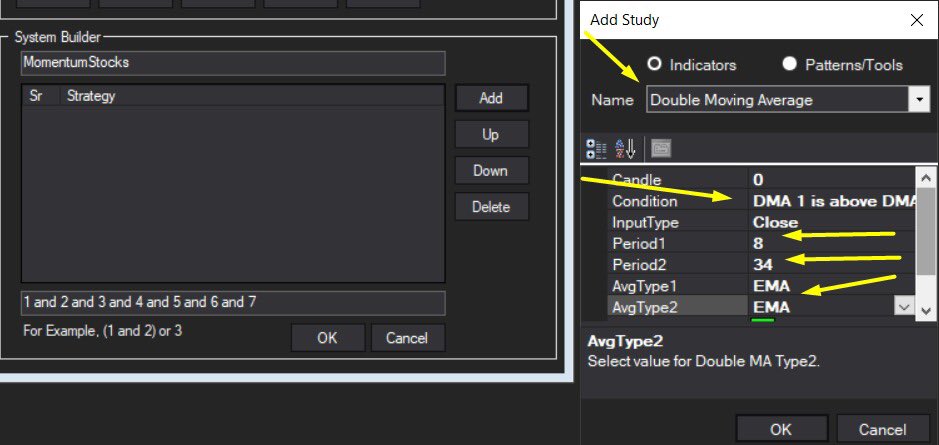Opposite of a good idea can also be a good idea
Given the immense interest in this #investment #process thread about how to get investment ideas, thought of creating a logical follow-up 🧵
Given that I have an idea & some sense for valuation & growth, how do i construct a portfolio?
If you like the thread, plz RT.
A lot of people ask: how do you find companies to invest in? very good question.
— Sahil Sharma (@sahil_vi) July 6, 2021
How did you find RACL, Pix?
Creating this ad-hoc thread to share my process.
if you like it, please RT to benefit maximum investors. \U0001f64f
Opposite of a good idea can also be a good idea
1. At any given point in time (in the past) i have only known deeply about 5% of the listed universe in India, or lower. When I say know deeply I mean read an annual report, an investor presentation, a concall, understood why the business is how it is.
2. Good unit economics or clearly improving unit economics (ROCE). For some cos ROCE might be optically depressed due to several reasons. Need to look beyond these.
Example: #RACL was at a P/E of 3-4 during march-april-may last year. What is the P/e multiple now? Business & management quality was equally good back then too.
Now imagine that I already own a portfolio of 15 companies (more on this later). How do I decide where and whether to place this new business I am excited about into the portfolio?
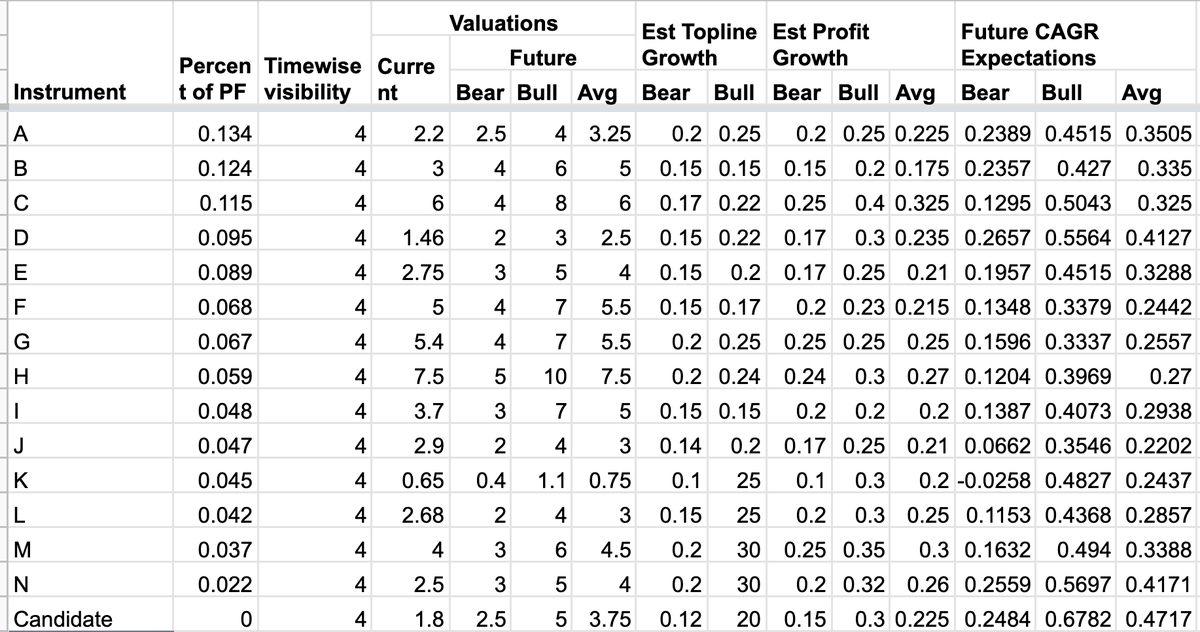
The most obvious condition under which I would sell is if I can find a better opportunity. I also sell on severe overvaluation. 15% top line growth 20% bottomline growth does not deserve 80 p/e regardless of the industry structure, or anything else, in my books.
If something is valued at 80 p/e, even if overvaluation continues, stock returns would mirror the bottomline growth. If i can find better opportunities, then it does not make sense to stick to something which can only offer me 20% growth
No. I am ok to hold an over-valued co if clear growth of 20% exists + i can see some optionalities which have high probability of playing out.
One of the most important elements of pf construction. I start my positions small, typically 2-3% of pf for a microcap & 5% of pf for a liquid small/midcap. I average up as per management execution.
Saregama 🎶🎵
Neuland 🌋🌋
Kilpest 🧬💉
all feel after Q4 results despite my understanding that business was becoming better. I averaged up.
Example: I own #IDFCFIRSTB 🏦 for > 1.5 years now. Initially allocated position size was hardly 1-2% of net worth, it is now close to 5% now.
Conviction ⤴️ when
Business Visibility ⤴️ when
Business learning/Understanding ⤴️ when
I work hard.
This is why I continue to work hard even for cos i already own.
Many investors brag about their holding period of cos. I personally cant do that yet. Why? Coz churn helps me in 2 ways.
do also read about ownership bias if you haven't.
https://t.co/DnM0hg6sEz
1. With time I learn more & understand myself better as an investor. Sahil of 1 year ago was ok to own NCC. Today's sahil vastly prefers predictable cashflows guarded by DCAs.
2. As the current bull market proceeds and participation becomes wider opportunity set shrinks. Until 2-3 months ago, microcaps were a clear area of inefficiency in the market (this is also why I love owning them)
300cr cos are moving 50% in 3 days after concalls. (Brownie points to those who can guess what I am referring to).
More from Sahil Sharma
A lot of people ask: how do you find companies to invest in? very good question.
How did you find RACL, Pix?
Creating this ad-hoc thread to share my process.
if you like it, please RT to benefit maximum investors. 🙏
1. https://t.co/2bvvRSBScr
Imagine what you want in a company, codify it in the form of filters, create a screen. Example below:
"Market Capitalization > 50
AND
Market Capitalization < 3000
AND
((Average return on capital employed 5Years > 25 AND
Price to Earning < 20) OR
(Average return on capital employed 5Years > 15 AND
Price to Earning < 10))
AND
Sales growth 5Years > 10
AND
...
...
Operating cash flow 5years /5 < Operating cash flow 3years /3
AND
Operating cash flow 7years /7 < Operating cash flow 3years /3"
In this screener, i am looking for
smallcaps with a min mcap,
which have a bare minimum average ROCE & valuation accordance to the unit economics
which are also growing topline
and where operating cash flows are also increasing, on an average basis
How did you find RACL, Pix?
Creating this ad-hoc thread to share my process.
if you like it, please RT to benefit maximum investors. 🙏
1. https://t.co/2bvvRSBScr
Imagine what you want in a company, codify it in the form of filters, create a screen. Example below:
"Market Capitalization > 50
AND
Market Capitalization < 3000
AND
((Average return on capital employed 5Years > 25 AND
Price to Earning < 20) OR
(Average return on capital employed 5Years > 15 AND
Price to Earning < 10))
AND
Sales growth 5Years > 10
AND
...
...
Operating cash flow 5years /5 < Operating cash flow 3years /3
AND
Operating cash flow 7years /7 < Operating cash flow 3years /3"
In this screener, i am looking for
smallcaps with a min mcap,
which have a bare minimum average ROCE & valuation accordance to the unit economics
which are also growing topline
and where operating cash flows are also increasing, on an average basis
More from All
On the occasion of youtube 20k and Twitter 70k members
A small tribute/gift to members
Screeners
technical screeners - intraday and positional both
before proceeding - i have helped you , can i ask you so that it can help someone else too
thank you
positional one
run - find #stock - draw chart - find levels
1- Stocks closing daily 2% up from 5 days
https://t.co/gTZrYY3Nht
2- Weekly breakout
https://t.co/1f4ahEolYB
3- Breakouts in short term
https://t.co/BI4h0CdgO2
4- Bullish from last 5
intraday screeners
5- 15 minute Stock Breakouts
https://t.co/9eAo82iuNv
6- Intraday Buying seen in the past 15 minutes
https://t.co/XqAJKhLB5G
7- Stocks trading near day's high on 5 min chart with volume BO intraday
https://t.co/flHmm6QXmo
Thank you
A small tribute/gift to members
Screeners
technical screeners - intraday and positional both
before proceeding - i have helped you , can i ask you so that it can help someone else too
thank you
positional one
run - find #stock - draw chart - find levels
1- Stocks closing daily 2% up from 5 days
https://t.co/gTZrYY3Nht
2- Weekly breakout
https://t.co/1f4ahEolYB
3- Breakouts in short term
https://t.co/BI4h0CdgO2
4- Bullish from last 5
intraday screeners
5- 15 minute Stock Breakouts
https://t.co/9eAo82iuNv
6- Intraday Buying seen in the past 15 minutes
https://t.co/XqAJKhLB5G
7- Stocks trading near day's high on 5 min chart with volume BO intraday
https://t.co/flHmm6QXmo
Thank you
Tip from the Monkey
Pangolins, September 2019 and PLA are the key to this mystery
Stay Tuned!

1. Yang
2. A jacobin capuchin dangling a flagellin pangolin on a javelin while playing a mandolin and strangling a mannequin on a paladin's palanquin, said Saladin
More to come tomorrow!

3. Yigang Tong
https://t.co/CYtqYorhzH
Archived: https://t.co/ncz5ruwE2W

4. YT Interview
Some bats & pangolins carry viruses related with SARS-CoV-2, found in SE Asia and in Yunnan, & the pangolins carrying SARS-CoV-2 related viruses were smuggled from SE Asia, so there is a possibility that SARS-CoV-2 were coming from
Pangolins, September 2019 and PLA are the key to this mystery
Stay Tuned!

1. Yang
Meet Yang Ruifu, CCP's biological weapons expert https://t.co/JjB9TLEO95 via @Gnews202064
— Billy Bostickson \U0001f3f4\U0001f441&\U0001f441 \U0001f193 (@BillyBostickson) October 11, 2020
Interesting expose of China's top bioweapons expert who oversaw fake pangolin research
Paper 1: https://t.co/TrXESKLYmJ
Paper 2:https://t.co/9LSJTNCn3l
Pangolinhttps://t.co/2FUAzWyOcv pic.twitter.com/I2QMXgnkBJ
2. A jacobin capuchin dangling a flagellin pangolin on a javelin while playing a mandolin and strangling a mannequin on a paladin's palanquin, said Saladin
More to come tomorrow!

3. Yigang Tong
https://t.co/CYtqYorhzH
Archived: https://t.co/ncz5ruwE2W

4. YT Interview
Some bats & pangolins carry viruses related with SARS-CoV-2, found in SE Asia and in Yunnan, & the pangolins carrying SARS-CoV-2 related viruses were smuggled from SE Asia, so there is a possibility that SARS-CoV-2 were coming from
ChatGPT is a phenomenal AI Tool.
But don't limit yourself to just ChatGPT.
Here're 8 AI-powered tools you should try in 2023:
1. KaiberAI
@KaiberAI helps you generate beautiful videos in minutes.
Transform your ideas into the visual stories of your dreams with this Amazing Tool.
New features:
1. Upload your custom music
2. Prompt Templates
3. Camera Movements:
Check here
https://t.co/ivnDRf628L

2. @tldview TLDV
Best ChatGPT Alternative for meetings.
Make your meetings 10X more productive with this amazing tool.
Try it now:
https://t.co/vOy3sS4QfJ
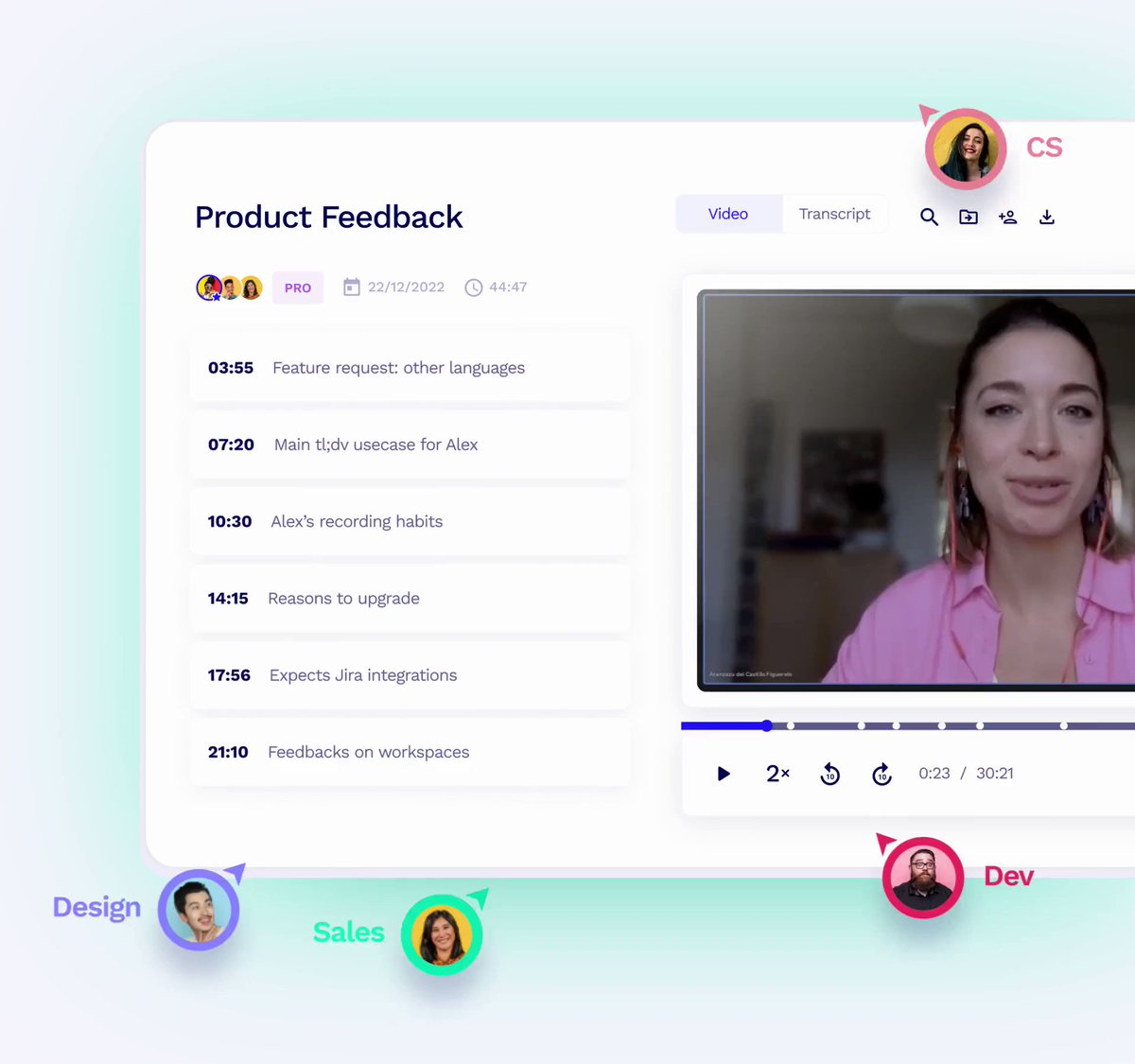
3. ComposeAI
Use ComposeAI for generating any text using AI.
It’s will help you write better content in seconds.
Try it here:
https://t.co/ksj5aop5ZI
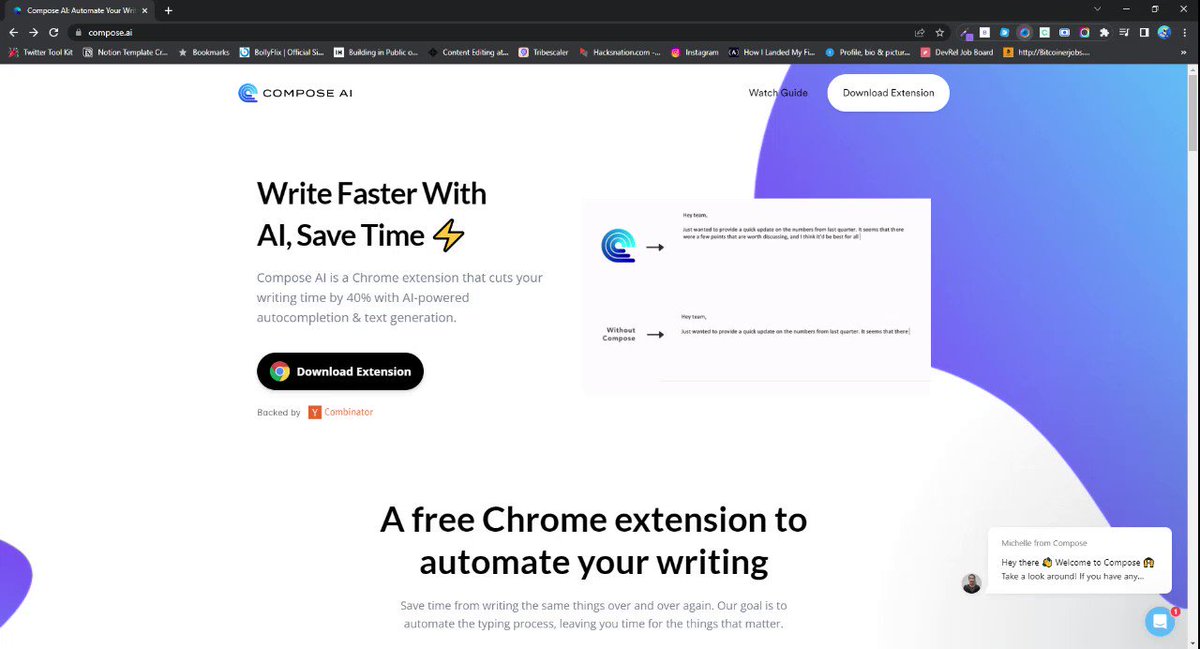
4. Browser AI
Use this AI tool to extract and monitor data from any website.
Train a robot in 2 minutes to do your work.
No coding required.
https://t.co/nNiawtUMyO
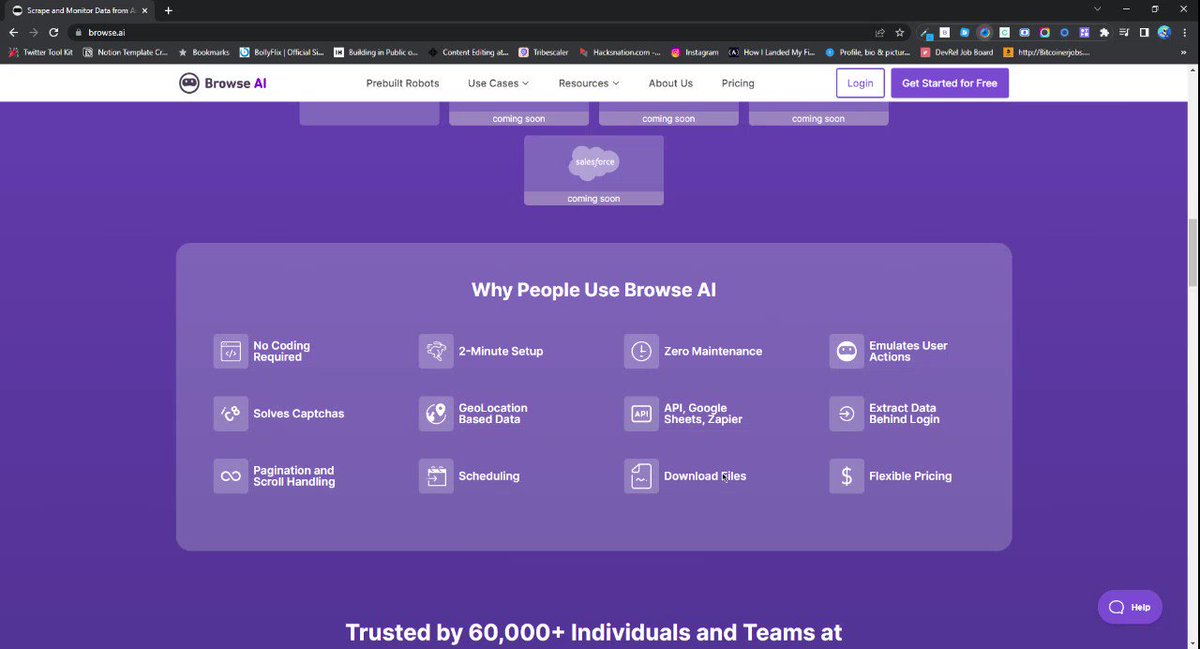
But don't limit yourself to just ChatGPT.
Here're 8 AI-powered tools you should try in 2023:
1. KaiberAI
@KaiberAI helps you generate beautiful videos in minutes.
Transform your ideas into the visual stories of your dreams with this Amazing Tool.
New features:
1. Upload your custom music
2. Prompt Templates
3. Camera Movements:
Check here
https://t.co/ivnDRf628L

2. @tldview TLDV
Best ChatGPT Alternative for meetings.
Make your meetings 10X more productive with this amazing tool.
Try it now:
https://t.co/vOy3sS4QfJ

3. ComposeAI
Use ComposeAI for generating any text using AI.
It’s will help you write better content in seconds.
Try it here:
https://t.co/ksj5aop5ZI

4. Browser AI
Use this AI tool to extract and monitor data from any website.
Train a robot in 2 minutes to do your work.
No coding required.
https://t.co/nNiawtUMyO

You May Also Like
To people who are under the impression that you can get rich quickly by working on an app, here are the stats for https://t.co/az8F12pf02
📈 ~12000 vistis
☑️ 109 transactions
💰 353€ profit (285 after tax)
I have spent 1.5 months on this app. You can make more $ in 2 days.
🤷♂️

I'm still happy that I launched a paid app bcs it involved extra work:
- backend for processing payments (+ permissions, webhooks, etc)
- integration with payment processor
- UI for license activation in Electron
- machine activation limit
- autoupdates
- mailgun emails
etc.
These things seemed super scary at first. I always thought it was way too much work and something would break. But I'm glad I persisted. So far the only problem I have is that mailgun is not delivering the license keys to certain domains like https://t.co/6Bqn0FUYXo etc. 👌
omg I just realized that me . com is an Apple domain, of course something wouldn't work with these dicks
📈 ~12000 vistis
☑️ 109 transactions
💰 353€ profit (285 after tax)
I have spent 1.5 months on this app. You can make more $ in 2 days.
🤷♂️

I'm still happy that I launched a paid app bcs it involved extra work:
- backend for processing payments (+ permissions, webhooks, etc)
- integration with payment processor
- UI for license activation in Electron
- machine activation limit
- autoupdates
- mailgun emails
etc.
These things seemed super scary at first. I always thought it was way too much work and something would break. But I'm glad I persisted. So far the only problem I have is that mailgun is not delivering the license keys to certain domains like https://t.co/6Bqn0FUYXo etc. 👌
omg I just realized that me . com is an Apple domain, of course something wouldn't work with these dicks





















